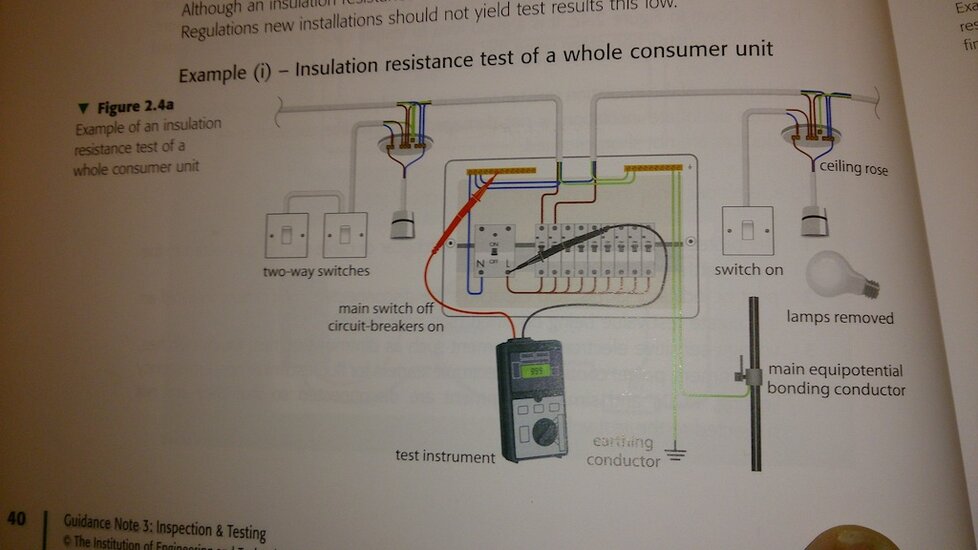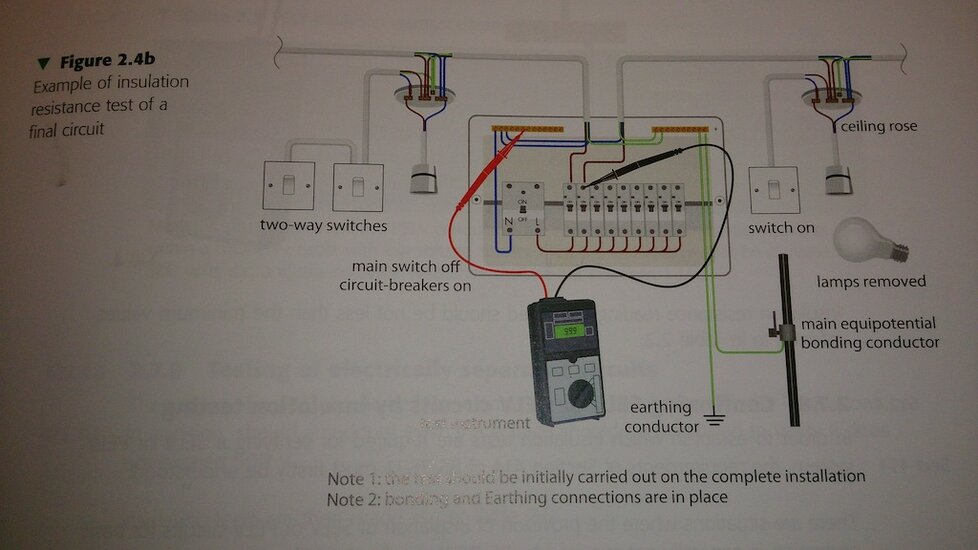- Sep 24, 2013
- 1,519
- 2,493
- 3,688
- If you're a qualified, trainee, or retired electrician - Which country is it that your work will be / is / was aimed at?
- United Kingdom
- What type of forum member are you?
- Practising Electrician (Qualified - Domestic or Commercial etc)
- Business Name
- Dovecote Electrical
Eh up 
Someone tell me where I'm going wrong.
I'm reading up on testing theory, using GN3 (6th edition, incorporating Amd 1, 2012). Section 2.7.7, pp40-41.
"Simple installations that contain no dist. ccts should pref be tested as a whole, see fig 2.4a."

"Test should be carried out with main switch off, all fuses in place, switches and cct breakers closed, lamps removed..." blah blah.
Got it. All good
Next:
"Example (ii) - IR test of a final cct. Fig 2.4b shows an example of testing a single final circuit at a CU (only the line to neutral test is shown)."

Unlike the first example (fig 2.4a, for the whole installation) there is no accompanying text to say, "main switch like this, fuses like that or CBs like the other," all you've got to go on is the picture.
But all the breakers are set to "on". Which means, all your circuits will be in parallel, wont they (as far as an IR test is concerned)? And you're not doing an IR of just one circuit at all, you're doing the whole installation again. Aren't you? Should you, in fact, turn the breakers off / remove the fuses (to IR test individual circuits)?
Or am I going wrong somewhere?


Someone tell me where I'm going wrong.
I'm reading up on testing theory, using GN3 (6th edition, incorporating Amd 1, 2012). Section 2.7.7, pp40-41.
"Simple installations that contain no dist. ccts should pref be tested as a whole, see fig 2.4a."

"Test should be carried out with main switch off, all fuses in place, switches and cct breakers closed, lamps removed..." blah blah.
Got it. All good

Next:
"Example (ii) - IR test of a final cct. Fig 2.4b shows an example of testing a single final circuit at a CU (only the line to neutral test is shown)."

Unlike the first example (fig 2.4a, for the whole installation) there is no accompanying text to say, "main switch like this, fuses like that or CBs like the other," all you've got to go on is the picture.
But all the breakers are set to "on". Which means, all your circuits will be in parallel, wont they (as far as an IR test is concerned)? And you're not doing an IR of just one circuit at all, you're doing the whole installation again. Aren't you? Should you, in fact, turn the breakers off / remove the fuses (to IR test individual circuits)?
Or am I going wrong somewhere?










